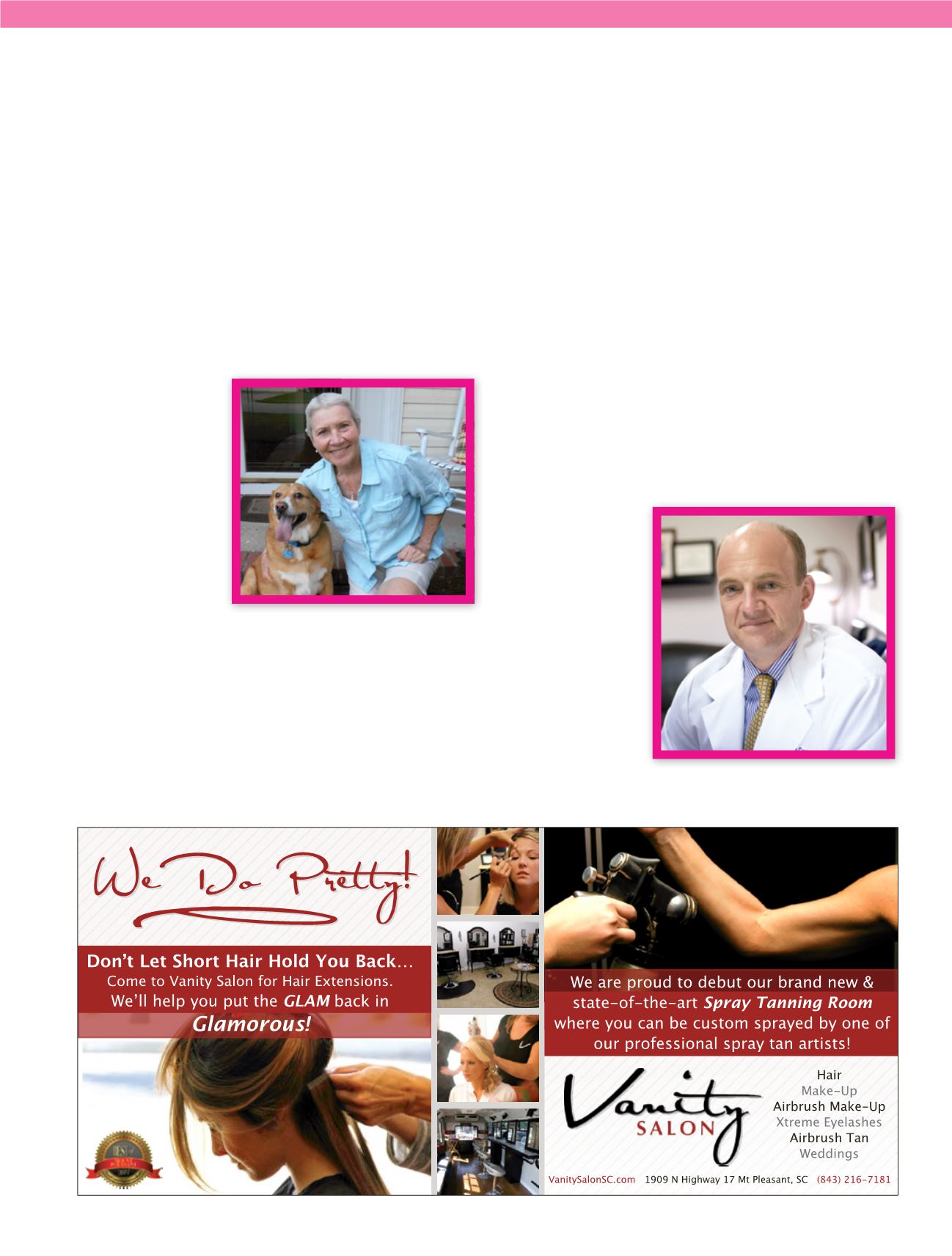

83
www.MountPleasantPhysicians.com|
www.CharlestonPhysicians.com|
www.MountPleasantPhysicians.comaround the breast, taking multiple images which, when
digitally assembled, provide the radiologist with a clear,
three-dimensional picture.
What happens when a shadow or questionable spot
appears on your mammogram? You’ll be called back for
further tests, including additional detailed views of the area.
Ultrasound can help differentiate between fluid-filled sacs
and solid masses. Magnetic Resonance Imaging is also used
in some cases to take a closer look at suspicious areas. If
you or your doctor have actually found a lump, a biopsy is
usually needed to make a determination.
Norma Jean Page,
recreation director
for the Isle of Palms,
found a lump in
her left breast in
September of 2012.
Because her breasts
are fibrocystic, lumps
were not uncommon,
and, even though she
had no family history
of breast cancer, this
one gave her pause.
No stranger to biopsies, she asked her doctor, “Don’t you
want to aspirate the girl on the left?”
He did and her diagnosis of cancer was followed by a
lumpectomy, chemotherapy and radiation, as well as a year
on the drug Herceptin.
“I don’t have time for this. Let’s get it out,” Page told
her doctor.
She continues monitoring her health through regular
mammograms and visits to the doctor. Through it all, she
maintains a positive attitude.
“It has made me appreciate life more. I look at life
differently now,” Page said. “I’ve mentored five or six (recently
diagnosed) ladies and I feel like I’ve made a difference.”
Because Page was diagnosed early, she had a
lumpectomy rather than a full mastectomy. Others are not
as lucky, but losing a breast is less traumatic thanks to the
doctors at The Center for Natural Breast Reconstruction.
Dr. James Craigie and Dr. Richard Kline both trained
with Dr. Robert Allen at Louisiana State University, who
developed the DIEP, SIEA and GAP flap techniques. Dr.
Craigie explained that breast reconstruction is different
for each woman, but the goal is always the same: to
restore normalcy to lives that have been changed by the
diagnosis of breast cancer. We may think our breasts are
too small, too large
or too droopy, but
we do want to keep
both of them.
The practice
is near the East
Cooper Medical
Center, where the
microsurgeons – they
are literally working
with a microscope on
tiny blood vessels to
nurture transplanted
tissue – operate
Norma Jean Page credits her recovery in
part to an active lifestyle.
Dr. James Craigie is dedicated to improving
the lives of breast cancer survivors.
















